| ← back |
Colonial Meetinghouses Featured in this Project |
next → |
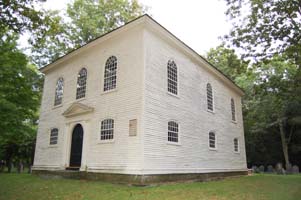 Name of Meetinghouse: Old Trinity Church
Name of Meetinghouse: Old Trinity Church
View on a mapStreet Address of Meetinghouse: Church St. (just south of the intersection with Brown Road), Brooklyn, CTYear(s) Built: 1771 National Register of Historic Places Designation: Yes - 1970 Connecticut State Register of Historic Places: ? Organization responsible: Trinity Episcopal Church Organization's address: P.O. Box 276, Brooklyn, CT 06234 Organization's web site: Trinity Church, Brooklyn CT Town Information: Town of Brooklyn, CT Tax status: Tax Exempt 501(c)(3) Contact: Contact Trinity Church Brooklyn Telephone: E-mail: none This page was last modified on: 19 Oct 2015 Acknowledgements: The following text has been taken from a sermon by the Rev. Thomas Brinley Fogg, grandson of the first rector, who preached at the 100th anniversary of the founding of Trinity Church Brooklyn, and has been used by permission.
In 1771, the Anglican Church in Connecticut stood under the shadow of a religious establishment as unbending in the exercise of its almost unlimited authority as the State Church of England ever was - an establishment whose supporters treated the idea of worshipping God according to the dictates of any conscience but their own with a contempt that has never been exceeded. There were a few scattered Anglican church members in the area, but they had known no other way other than to hold their peace, and pay their taxes for the support of the established religion.
Only one measure of relief was possible: the building of an Anglican church. That done, a Colonial law would permit him to pay his Society taxes for the support of services in that church rather than the "established" Congregational church. And the building would need to be completed prior to the completion of the Meetinghouse in the center of town. In November of 1769, with the help of Dr. Walton of Killingly, a declaration of conformity to the Church of England was signed, with the condition that Malbone should build a church and get a missionary established. The frame of the building, "exceedingly well done," was raised in the following June, and the work went on with fair speed to completion. The main burden of the expense, and all the care and anxiety, came upon Malbone.
Meanwhile, the Congregationalists, burdened by the slow pace of committee decision making, made slow progress. The decisive vote to build the new meetinghouse was passed at a Society meeting, held in February, 177O. It was intended to finish the building before Malbone's church could be finished, and to secure his assessment. However, in the end this was not to be, and Trinity was completed in April of 1771, well ahead of the Congregational meetinghouse.
Trinity Church Brooklyn is the oldest surviving Anglican church building in Connecticut. |
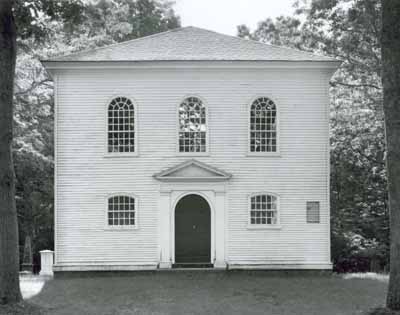
|

|
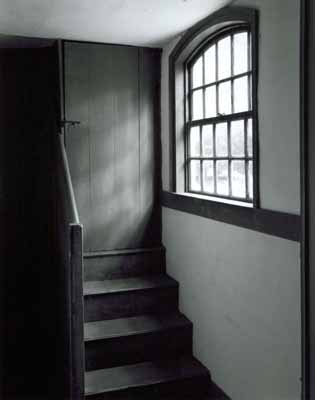
|
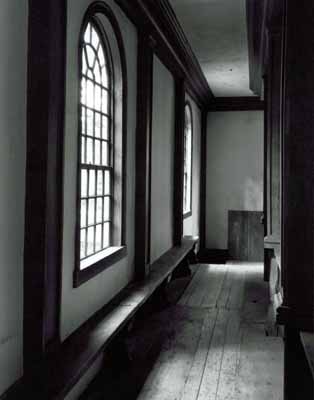
|

|
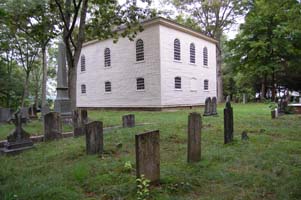 "A hundred years ago today, this House was opened for the public worship of Almighty GOD,
in the communion of the Church of England."
Thus began the sermon that marked the 100th anniversary of Trinity Church in Brooklyn, Connecticut,
which opened its doors on April 12th, 1771.
"A hundred years ago today, this House was opened for the public worship of Almighty GOD,
in the communion of the Church of England."
Thus began the sermon that marked the 100th anniversary of Trinity Church in Brooklyn, Connecticut,
which opened its doors on April 12th, 1771.
 The beginnings of Trinity Church Brooklyn are solely attributable to one man: Godfrey Malbone.
He was a staunch Anglican churchman, and a 1745 graduate of Queen's College, Oxford.
The work, he confessed, was undertaken by him not only for religious motives,
but primarily as a means of saving himself from unjust and unreasonable taxation
to support the building of a new meetinghouse by the Ecclesiastical Society of Brooklyn.
His own assessment for the new building was about 200 Pounds - more than an eighth of the entire cost.
The beginnings of Trinity Church Brooklyn are solely attributable to one man: Godfrey Malbone.
He was a staunch Anglican churchman, and a 1745 graduate of Queen's College, Oxford.
The work, he confessed, was undertaken by him not only for religious motives,
but primarily as a means of saving himself from unjust and unreasonable taxation
to support the building of a new meetinghouse by the Ecclesiastical Society of Brooklyn.
His own assessment for the new building was about 200 Pounds - more than an eighth of the entire cost.
 The load was a heavy one.
He was by no means a rich man, except in land that brought him but little.
Both for the credit of his cause and of himself,
he was determined that no debts should clog the work,
and he was often seriously distressed in providing means to meet the necessary payments.
However, he struggled on until the building was satisfactorily finished, and entirely paid for.
He named it Trinity, after his old parish church in Newport.
Its interior arrangements were conformed to those of that church, as closely as possible.
The altar was nearly where it is now; the pulpit, reading-desk, and clerk's desk, were about a third way down the alley.
Stoves, it hardly need be said, were unknown in churches then.
The load was a heavy one.
He was by no means a rich man, except in land that brought him but little.
Both for the credit of his cause and of himself,
he was determined that no debts should clog the work,
and he was often seriously distressed in providing means to meet the necessary payments.
However, he struggled on until the building was satisfactorily finished, and entirely paid for.
He named it Trinity, after his old parish church in Newport.
Its interior arrangements were conformed to those of that church, as closely as possible.
The altar was nearly where it is now; the pulpit, reading-desk, and clerk's desk, were about a third way down the alley.
Stoves, it hardly need be said, were unknown in churches then.
 The early years for Trinity Church were difficult.
In 1772 there were 25 families in the parish, and the number increased steadily
until the outbreak of the Revolutionary War.
The church was then closed for the duration of the war because the first priest,
Mr. Fogg, could not in good conscience omit the prayers for the Royal Family,
as was required by his ordination vows.
In the years during and after the war, the church struggled, often lacking a priest.
It was Godfrey Malbone who maintained the small flock of believers,
and eventually led the church to become the vibrant, healthy organization that it is today.
The early years for Trinity Church were difficult.
In 1772 there were 25 families in the parish, and the number increased steadily
until the outbreak of the Revolutionary War.
The church was then closed for the duration of the war because the first priest,
Mr. Fogg, could not in good conscience omit the prayers for the Royal Family,
as was required by his ordination vows.
In the years during and after the war, the church struggled, often lacking a priest.
It was Godfrey Malbone who maintained the small flock of believers,
and eventually led the church to become the vibrant, healthy organization that it is today.